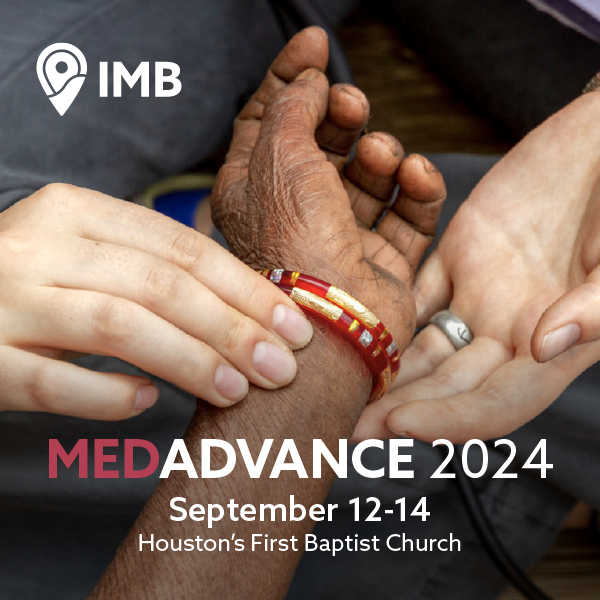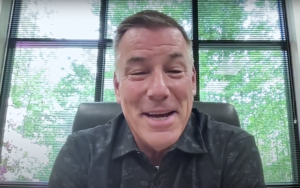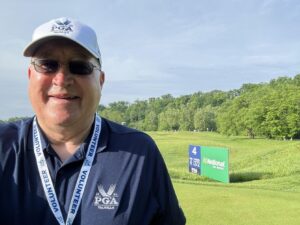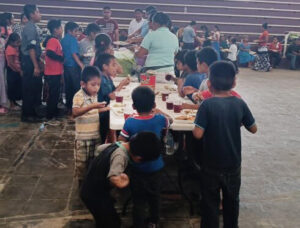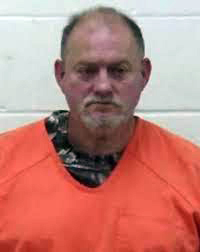
BOLIVAR, Mo. (BP)–John Playter has learned to live one day at a time. He learned it the hard way — barely escaping death from one day to the next during the Bataan Death March and in a Japanese slave labor camp in the Philippines during World War II.
His story is one of pain. Despair. But his also is a story of forgiveness.
Playter, a member of First Baptist Church of Bolivar, Mo., told his survival story for the first time during Bolivar’s July 4 Celebration of Freedom in 1994 — the 50th anniversary of his escape from the Japanese.
Now his story is out for all to read.
His personal memoir, “Survivor,” published by Southwest Baptist University, Bolivar, is available through the SBU bookstore.
When Playter started writing his memoir, he only had his family in mind. “I never told my story to my parents, and I’m ashamed of that,” he said. “But if my story is any benefit to anyone else, then that’s another good reason to have written it.”
Playter was one of 83 survivors who swam to shore after Americans torpedoed the Japanese ship Shinyo Maru carrying him and hundreds of other prisoners from the Philippines to Japan in August 1944.
He had been in captivity since April 1942 — captivity that included seeing comrades severely beaten or killed by Japanese soldiers while marching for several days on what became known as the Bataan Death March. Captivity that forced him to labor in rice fields, sleep with bugs crawling on his body, suffer several near-death bouts of malaria, dysentery and starvation. But one thing never changed — his faith in God.
“Daily prayer was always a part of my life during my imprisonment, and I found what peace I could at that time,” he said. “I had a lot of wonder about what was going to happen. We were in a hopeless situation in early ’42; we knew we were hopelessly surrounded, but we just made it a day at a time.”
The situation was worse than bleak. About 10,000 American troops in the Philippines had surrendered to the Japanese. It was the largest-ever surrender of American troops.
They were forced to live in filth under soldiers who had no qualms about killing them. They lived with the knowledge their government wasn’t coming to their rescue.
“The European Theater of Operation got all of the attention in the early days of the war,” Playter said. “So we were definitely expendable in the eyes of the powers that were.”
But his and the other soldiers’ loyalty to their country never faltered. “One of the moments I remember most is in the barracks after coming in from the rice fields, when a soldier pulled out an American flag. It was a very moving experience to see the flag after only seeing the Japanese flag for so long. It was a tearful moment for us.”
Expendable in the eyes of their government. The focus of hatred by their guards. No end in sight. Then, after the Americans had spent two years in prison camps, the Japanese loaded 750 men onto the Shinyo Maru, also known as the “Hell Ship,” in August 1944.
The ship set sail for Japan. The men were crammed into furnace-like lower holds with so little space and air that many lost consciousness when the hatches weren’t open — which was much of the time.
It was here, on the afternoon of Sept. 7, 1944, that Playter said he began living on borrowed time.
“Captain Milton Morgan, who was sitting with his back against the side of the ship, asked me to trade seats with him,” Playter recalled in chapter 10 of his book. “This I agreed to and had just sat down when two torpedoes struck our ship. The location where I had been sitting, and traded to Morgan, was at the edge of a lower hold that was covered with planks. This is the point that I have been trying to figure out for 55 years. Why was I spared?”
In the confusion, Playter — sliced down his left side by the sinking ship — and 83 others swam to shore. One died the next day. The 82 survivors were evacuated back to San Francisco in November 1944. All 667 other Americans on the ship, including Capt. Morgan, perished. Playter returned home to Missouri, where he was placed in a military hospital in Springfield. It was there he met the woman who would become his wife, Charlene.
They married in October 1945. He worked with the Army in Springfield until November 1945 before moving to New Mexico and picking up his original career in geology.
John and Charlene eventually moved back to Bolivar to operate a family farm. They had two daughters. He retired in 1986 after 25 years as city engineer. Charlene died in 1983.
But until 1994, he had never told his story. “I was mainly occupied with my occupation, just terribly busy,” he said. “It was only after I retired that I had my mind free to really think back.”
And his account might never have been known if it hadn’t been for a sermon on forgiveness preached by Ray Leininger, pastor of First Baptist, Bolivar.
“That sermon on forgiveness made me realize that I could not continue to hate the Japanese and love our Lord,” he recalled. “Fifty years later, I have forgiven the Japanese for what they did to me. I was so bitter within for all those years, but I didn’t really concentrate on it. It hasn’t been easy to tell my story.”
Leininger said it’s a story that needs to be told. “As he talks about his experience, he still breaks down,” the pastor said. “He has horrible memories that will outlive him. But John has had a peace about his experience as a result of forgiving.”
Playter still has some fellow survivors with whom he can relate — 25 of the 82 are still living. They most recently had a reunion in September in Jacksonville, Fla. “We have a bond that no one but us can understand.”
His book sells for $12.81 (tax included) plus $6 shipping and handling. It can be ordered by calling the SBU bookstore at (417) 328-1530.
–30–
(BP) photo posted in the BP Photo Library at www.bpnews.net. Photo title: JOHN PLAYTER.



